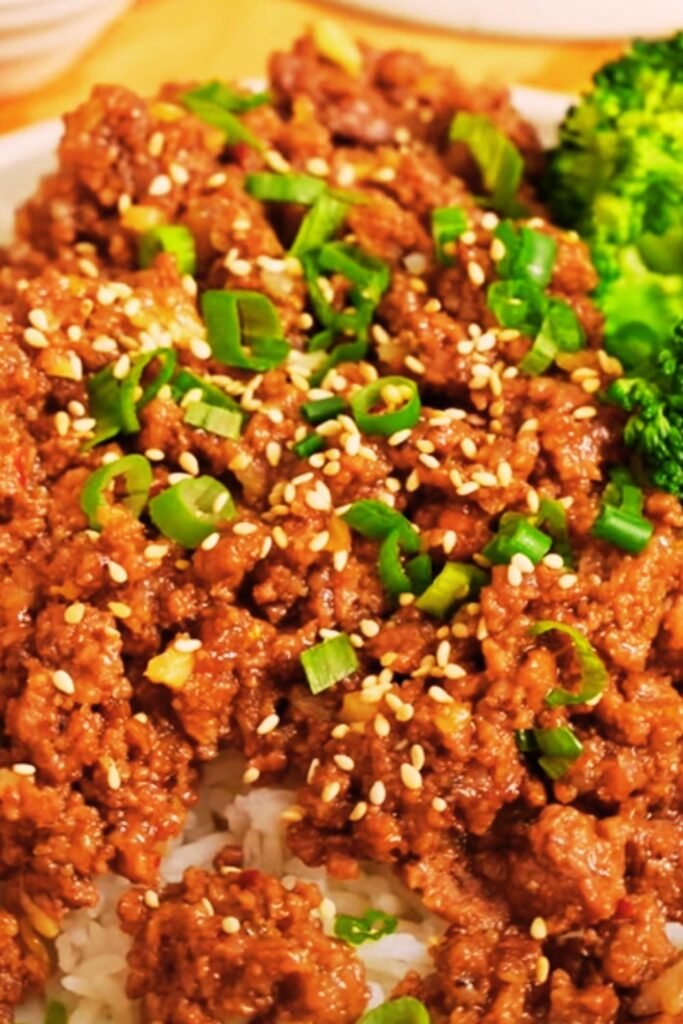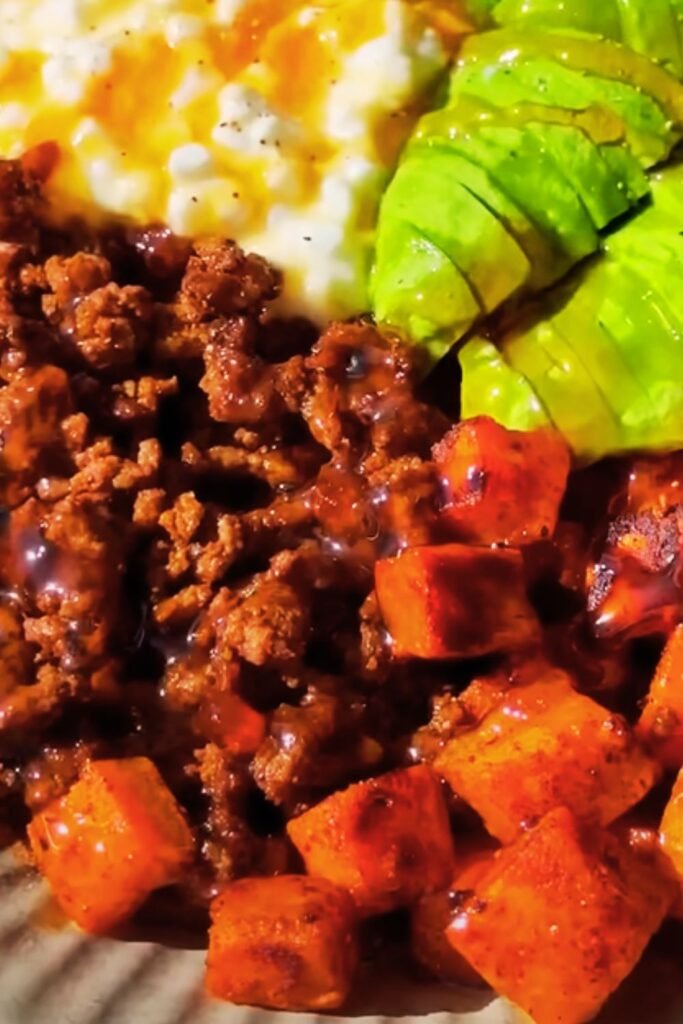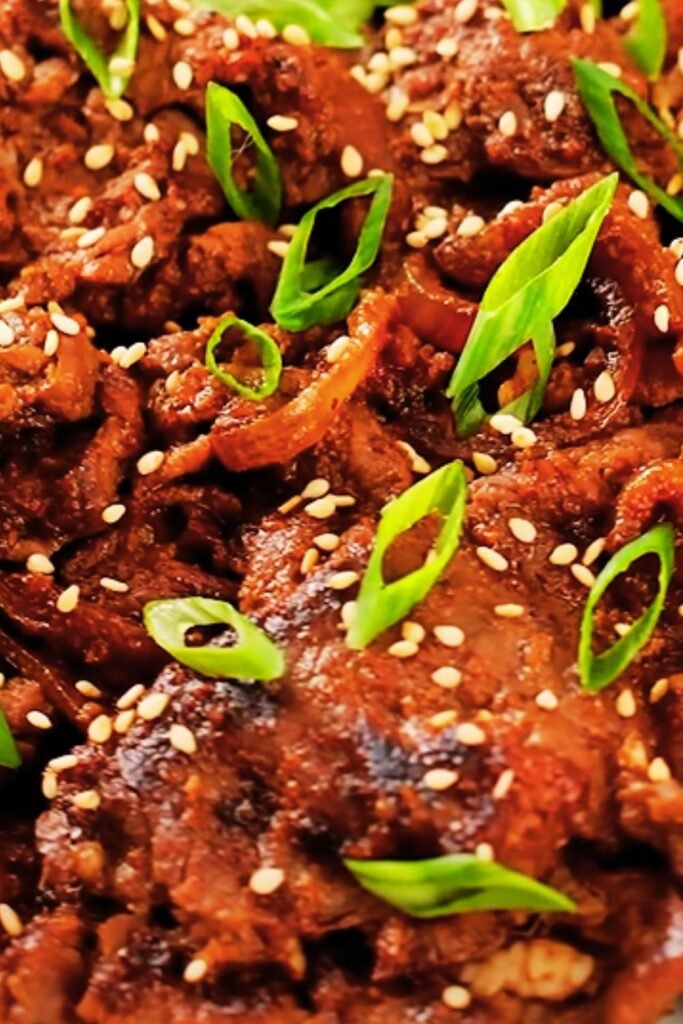When it comes to quick, satisfying meals that deliver serious nutrition, I’ve found that few combinations rival the humble ground beef and eggs bowl. This protein powerhouse has become my go-to option when I need something substantial that doesn’t require hours in the kitchen or a culinary degree to prepare.
As someone who’s experimented with countless meal combinations over the years, I can confidently say that this dish hits all the right notes—it’s versatile, budget-friendly, nutrient-dense, and absolutely delicious. Whether you’re meal prepping for a busy week ahead, following a specific eating plan, or simply looking for a hearty breakfast or dinner option, the ground beef and eggs bowl deserves a prominent place in your recipe rotation.
In this article, I’ll share my perfected ground beef and eggs bowl recipe, along with variations, nutritional benefits, and helpful tips I’ve gathered through countless preparations. Let’s dive into this simple yet satisfying culinary creation that might just become your new favorite meal.
What Makes Ground Beef and Eggs Such a Perfect Combination?
Before we get to the recipe itself, let’s explore why this pairing works so well together:
Nutritional Powerhouse
Ground beef and eggs deliver a perfect one-two punch of complete proteins. While many food combinations require careful planning to ensure you’re getting all essential amino acids, this duo handles that effortlessly. A single serving provides roughly 35-40 grams of high-quality protein, supporting muscle maintenance, satiety, and overall health.
Complementary Flavors
The rich, savory taste of properly seasoned ground beef creates an ideal foundation for the creamy, slightly sweet character of eggs. This interplay of flavors creates a deeply satisfying eating experience that feels both comforting and indulgent without requiring complicated ingredients.
Texture Contrast
One aspect I particularly appreciate is the textural contrast—tender ground beef paired with eggs that can be prepared to your preferred consistency, whether that’s silky soft scrambled or perfectly runny yolks that create a natural sauce when broken.
Economic Efficiency
In an era of rising food costs, this meal delivers exceptional nutrition at a relatively moderate price point. I’ve found that a pound of ground beef combined with 4-6 eggs can easily serve 2-4 people, depending on portion sizes and additional ingredients.
Meal Timing Flexibility
Unlike many dishes that feel appropriate only at certain times of day, the ground beef and eggs bowl transitions seamlessly from breakfast to lunch to dinner. I’ve enjoyed it at all hours, adjusting accompaniments as needed.
The Classic Ground Beef and Eggs Bowl Recipe
Now, let’s get to what you’re here for—my go-to recipe that serves as the perfect starting point for endless customization.
Ingredients (Serves 2)
- 1/2 pound grass-fed ground beef (85-90% lean)
- 4 large pasture-raised eggs
- 1 medium onion, diced
- 2 cloves garlic, minced
- 1 bell pepper (any color), diced
- 1 tablespoon olive oil or avocado oil
- 1 teaspoon paprika
- 1/2 teaspoon cumin
- 1/4 teaspoon chili powder (adjust to taste)
- Salt and freshly ground black pepper
- 2 tablespoons fresh herbs (cilantro, parsley, or chives), chopped
- Optional toppings: avocado slices, cherry tomatoes, green onions, hot sauce
Equipment Needed
- Large skillet (preferably cast iron)
- Spatula
- Mixing bowl
- Sharp knife and cutting board
- Measuring spoons
Instructions
- Prep your workspace
Begin by having all ingredients prepped and ready. I find that dicing the vegetables before starting the cooking process makes everything flow more smoothly. - Season the beef
In a bowl, combine the ground beef with half the paprika, cumin, chili powder, salt, and pepper. Mix gently with your hands, being careful not to overwork the meat. - Heat the skillet
Place your skillet over medium-high heat and add half the oil. Once hot (but not smoking), add the seasoned ground beef. - Cook the beef
Break up the beef with a spatula as it cooks, creating small, even pieces. Cook for about 5-7 minutes until nicely browned and no pink remains. Transfer to a plate and set aside. - Sauté the vegetables
In the same skillet, add the remaining oil along with the diced onion and bell pepper. Cook for 3-4 minutes until they begin to soften, then add the garlic and cook for another 30 seconds until fragrant. - Combine beef and vegetables
Return the cooked beef to the skillet with the vegetables. Add the remaining seasonings and stir to combine. Reduce heat to medium-low. - Prepare the eggs
You have several options here:- Create small wells in the beef mixture and crack eggs directly into them, then cover and cook until whites are set but yolks remain runny (about 3-4 minutes)
- Scramble the eggs separately and fold them into the beef mixture
- Fry eggs in a separate pan and place on top of the beef mixture when serving
- Garnish and serve
Sprinkle with fresh herbs and add any optional toppings you desire. Serve hot in bowls.

Nutritional Profile
One of the aspects I appreciate most about this meal is its exceptional nutritional profile. Here’s a breakdown of what you’re getting in each serving:
| Nutrient | Amount | % Daily Value* |
|---|---|---|
| Calories | 450-500 | – |
| Protein | 35-40g | 70-80% |
| Total Fat | 28-32g | 36-41% |
| Saturated Fat | 9-11g | 45-55% |
| Cholesterol | 435mg | 145% |
| Carbohydrates | 9-12g | 3-4% |
| Dietary Fiber | 2-3g | 7-11% |
| Sugars | 4-5g | – |
| Sodium | 380mg | 17% |
| Potassium | 680mg | 14% |
| Iron | 4.5mg | 25% |
| Vitamin B12 | 2.8mcg | 117% |
| Zinc | 5.7mg | 52% |
| Selenium | 28mcg | 51% |
| Vitamin D | 1.1mcg | 6% |
| Choline | 315mg | 57% |
*Percent Daily Values based on a 2,000 calorie diet
This nutritional breakdown makes the ground beef and eggs bowl particularly suitable for those following lower-carbohydrate eating patterns, but it can easily be adjusted to fit various dietary approaches.
Variations to Keep Things Interesting
While the classic recipe is wonderful, I’ve developed several variations over time that prevent meal fatigue and cater to different flavor preferences:
Mediterranean-Style
- Add 1/4 cup diced kalamata olives
- Include 1/2 cup diced cherry tomatoes
- Sprinkle with crumbled feta cheese
- Season with oregano instead of cumin and chili powder
- Garnish with fresh dill and lemon zest
Tex-Mex Inspired
- Add 1/4 cup black beans (rinsed and drained)
- Include 1/4 cup corn kernels
- Incorporate 1/2 teaspoon Mexican oregano
- Top with diced avocado, lime juice, and cotija cheese
- Serve with a side of salsa
Asian-Influenced
- Substitute 1 tablespoon of soy sauce (or coconut aminos) for salt
- Add 1 teaspoon grated ginger with the garlic
- Include 1/2 cup sliced mushrooms
- Sprinkle with sesame seeds
- Garnish with sliced green onions and a drizzle of sesame oil
Garden Harvest
- Add 1 cup baby spinach or kale (stirred in just before adding eggs)
- Include 1/2 cup diced zucchini with the other vegetables
- Top with 1/4 cup grated Parmesan cheese
- Garnish with fresh basil and a drizzle of balsamic glaze

Time-Saving Meal Prep Strategies
One of the reasons this recipe remains in my regular rotation is how well it lends itself to meal preparation. Here are some strategies I’ve developed:
Component Preparation
When time is particularly tight, I often prepare the beef and vegetable mixture in advance, storing it in airtight containers in the refrigerator for up to 3 days. When ready to eat, I simply reheat the mixture and add freshly cooked eggs.
Recipe Scaling
The recipe doubles or triples beautifully. I frequently prepare a larger batch of the beef mixture on Sundays, portioning it out for several meals throughout the week.
Freezer-Friendly Options
While I don’t recommend freezing the completed dish with eggs, the seasoned beef and vegetable mixture freezes exceptionally well for up to 3 months. I portion it into individual containers, defrost overnight in the refrigerator, and add fresh eggs when reheating.
Smart Vegetable Prep
When I’m really planning ahead, I chop extra vegetables during my weekly meal prep session, storing them in containers in the refrigerator. This simple step saves valuable minutes on busy weeknights.
Perfect Pairings and Serving Suggestions
While this dish is certainly substantial enough to stand alone, here are some of my favorite accompaniments that complement it wonderfully:
- Toasted sourdough bread for dipping in those lovely egg yolks
- A simple green salad dressed with lemon juice and olive oil
- Roasted sweet potato cubes seasoned with cinnamon and salt
- Sliced avocado with a squeeze of lime and pinch of sea salt
- Fresh fruit like berries or citrus for a refreshing contrast
- Kimchi or sauerkraut for probiotic benefits and tang
- Warm corn tortillas for scooping
- Greek yogurt mixed with herbs as a cooling element
Tips for Perfect Results Every Time
After making this dish countless times, I’ve gathered several tips that elevate it from good to exceptional:
Quality Ingredients Matter
I’ve found that pasture-raised eggs and grass-fed beef truly make a difference in both flavor and nutrition. When possible, I opt for these higher-quality options.
Temperature Control
For the most tender ground beef, avoid overcooking. Once it loses its pink color, it’s done. Continuing to cook will only dry it out and toughen the texture.
Egg Perfection
If adding eggs directly to the skillet:
- For runny yolks: create deep enough wells, cover the pan, and cook on medium-low heat
- For soft scrambled: beat eggs with a fork just until combined (overmixing makes them tough), and cook them gently, removing from heat when slightly underdone as they’ll continue cooking
Seasoning Layering
I always season in stages—the beef first, then adjust seasonings after combining with vegetables. A final taste test before adding eggs ensures perfect flavor balance.
Resting Period
Allowing the dish to rest for 1-2 minutes after cooking helps flavors meld and makes for a more cohesive eating experience.
Catering to Dietary Needs
One of the strengths of this recipe is how easily it adapts to various dietary requirements:
Lower Fat Option
Use 93-95% lean ground beef or substitute ground turkey breast, and use just one egg yolk with several egg whites.
Higher Carbohydrate Version
Add roasted sweet potatoes, cooked quinoa, or brown rice to increase the carbohydrate content for active individuals or those not following a low-carb approach.
Dairy-Free
The base recipe is naturally dairy-free. If your variation includes cheese, simply omit it or use a plant-based alternative.
Nightshade-Free
Omit the bell peppers and replace paprika and chili powder with herbs like oregano, thyme, and a pinch of turmeric for color.

Common Questions and Troubleshooting
Over the years, I’ve fielded many questions about this recipe. Here are the most common ones along with my solutions:
Q: My eggs always overcook when I add them directly to the skillet. What am I doing wrong?
The most common issue is having the heat too high or not creating deep enough wells in the beef mixture. Make sure to reduce heat to medium-low, create substantial wells for the eggs, and consider covering the pan to help the whites set before the yolks overcook.
Q: Can I use leaner ground beef (96-97% lean)?
You can, but be aware that the dish will be significantly less flavorful and may become dry. If using very lean beef, consider adding 1-2 teaspoons of olive oil to the meat when seasoning it, or incorporate more vegetables that release moisture during cooking.
Q: How do I know when ground beef is fully cooked?
Ground beef is fully cooked when it’s completely browned with no pink remaining and has reached an internal temperature of 160°F (71°C). If you don’t have a thermometer, ensure no pink color remains in the meat.
Q: My vegetable mixture releases too much liquid. How do I prevent this?
Two strategies help here: First, make sure your skillet is hot enough when adding vegetables. Second, avoid overcrowding the pan, as vegetables will steam rather than sauté if too tightly packed. If needed, cook vegetables in batches.
Q: Can I prepare this dish without a cast-iron skillet?
Absolutely! While cast iron provides excellent heat retention and distribution, any heavy-bottomed skillet will work. Adjust cooking times as needed based on your cookware’s heat retention capabilities.
Q: How can I make this dish more filling without adding many calories?
Increase the volume of non-starchy vegetables. Bell peppers, zucchini, spinach, and mushrooms add bulk, nutrients, and flavor with minimal caloric impact. You could easily double the vegetables in the base recipe without significantly affecting the protein-forward nature of the dish.
The Health Benefits Beyond Taste
As someone who values both flavor and nutrition, I appreciate that this meal delivers exceptional nutrition in several key areas:
Complete Protein Source
Both beef and eggs provide all nine essential amino acids in appropriate ratios, making this dish a complete protein source that supports muscle maintenance and overall tissue health.
Micronutrient Density
This combination is particularly rich in:
- B vitamins (especially B12 from both ingredients)
- Highly bioavailable iron (heme iron from beef)
- Choline from egg yolks (crucial for brain health)
- Zinc and selenium (important for immune function)
- Fat-soluble vitamins like A, D, E, and K
Satiety Support
The combination of protein and fat in this dish activates powerful satiety signals, often reducing overall food intake throughout the day. I personally find that this meal keeps me satisfied for 5-6 hours, compared to 2-3 hours with carbohydrate-heavier meals.
Blood Sugar Stability
With minimal impact on blood glucose levels, this protein-forward meal helps maintain steady energy levels throughout the day, avoiding the crash that often follows carbohydrate-rich meals.
Final Thoughts
The ground beef and eggs bowl has earned its place as a cornerstone in my meal repertoire through its perfect balance of simplicity, nutrition, taste, and versatility. Whether you’re cooking for one or feeding a family, looking for a quick breakfast or hearty dinner, this adaptable dish delivers satisfaction on multiple levels.
What I appreciate most about this meal is how it respects the basics of good cooking—quality ingredients, proper technique, and thoughtful seasoning—while remaining accessible to cooks of all skill levels. There’s something deeply satisfying about creating a nutritious, delicious meal with minimal fuss and maximum impact.
I encourage you to start with the base recipe and then explore the variations that appeal to your palate and dietary preferences. The ground beef and eggs bowl isn’t just a recipe—it’s a template for countless satisfying meals that nourish both body and soul.
Q&A Section
Q: Is this recipe suitable for meal prep?
Absolutely! The beef and vegetable mixture can be prepared up to 3 days in advance and stored in the refrigerator. When ready to eat, simply reheat the mixture and add freshly cooked eggs. For longer storage, the beef mixture (without eggs) can be frozen for up to 3 months.
Q: Can I substitute ground beef with another protein?
Yes! Ground turkey, chicken, bison, lamb, or plant-based alternatives all work well in this recipe. Just remember that leaner proteins may require additional oil to prevent drying out, and cooking times may vary slightly.
Q: How can I make this recipe more budget-friendly?
While I recommend high-quality ingredients when possible, this dish remains nutritious even with conventional beef and eggs. Watch for sales on ground beef (buying in bulk and freezing portions), use frozen vegetables when fresh are expensive, and extend the meat with additional vegetables or beans.
Q: Is this recipe suitable for children?
This is a wonderfully nutritious recipe for children! For younger palates, you might reduce the spices initially and gradually increase them as children adapt to more complex flavors. Involving kids in customizing their own bowls often increases their interest in eating the meal.
Q: How can I increase the fiber content of this dish?
Great question! The simplest approach is adding more vegetables—especially those high in fiber like bell peppers, spinach, and mushrooms. You could also serve the bowl over a small portion of beans, lentils, or whole grains like brown rice or quinoa if your dietary approach includes these foods.
Q: Can this recipe be made vegetarian?
While the original recipe centers on beef and eggs, you could create a vegetarian version using a plant-based ground meat alternative and maintaining the eggs (if you consume them as a vegetarian). For a vegan version, both the meat and eggs would need plant-based substitutes, significantly changing the nutritional profile and preparation techniques.